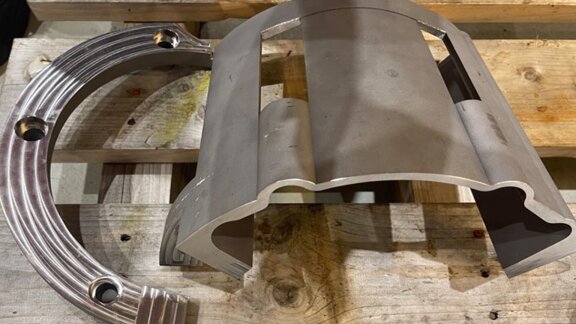The resource savings in a 3D printing partnership
September 6, 2023
The world is on-track to use more resources than it has. In a competitive market, challenges sourcing commodities are real, especially for metals. Countries have tabled plans to make resource use more circular, with the parallel aim of lowering emissions. Yet, even in Norway, with its innovative energy sector, just 2.4 percent of the economy is circular, according to a consumer report.
Look-up circular economy, and you’ll find it’s about conserving resources by introducing new ways to produce, share, reuse, repair and recycle. Aker Solutions and partners Aker BP, F3nice and Additech, have taken an important step toward a more circular economy.
An additive manufacturing (AM, or 3D-printing) pilot project is showing the great potential to conserve resources in adding waste to production processes. The partnership is 3D-printing tubing hanger protectors for subsea wells using a powdered mix of recycled scrap taken from our workshops in Tranby, Norway.
Subsea wells produce oil & gas. Production tubing is lowered into them and suspended by a tubing hanger fitted with hydraulic and electric controls. Tubing hanger protectors shield these critical parts during tubing installation.
The savings
Tubing hanger protectors are usually made of stainless steel and produce 237 kilograms of carbon dioxide (C02) emissions, mostly from their manufacture and transport.
3D-printed, this footprint reduces to 34 kg CO2 per hanger protector. “The process only requires 13 kg of steel powder versus 227kg (forge and transport), so that’s a significant reduction in C02 emissions and material waste,” says Ådne Østebrøt,” senior services specialist, Aker Solutions.
3D printing removes 203 kg of CO2 emissions per hanger protector. At today’s carbon price, five installs would buy about 10 USD worth of tradeable emissions credits. The CO2 values may seem small, but the resource savings potential lies in the industrialization and scale up of AM using recycled waste. This circular economy process is an opportunity for change away from carbon-intensive commodities, when global supply chains are constrained.
Successful Partnership
The job of converting waste metal from our workshops at Tranby into additive powder was left to the specialists at F3niche. They processed the raw metal scraps and supplied the experts at Additech who printed the parts.
“Over 80 percent of the protector additives originated from our Tranby site’s own steel waste,” Østebrøt says
To cut transport costs and the use of carbon-intensive imported materials, decommissioned steel found locally was added to the milled shavings and workshop scraps.
Printing subsea parts of recycled steel was a breakthrough. Cooperation between partners passionate about challenging the status quo seemed to ensure the success of a project that started when Aker BP wanted a sustainable tubing-hanger solution.
The partners’ AM technology produced a circular economy product using repurposed waste. Their processes kept to strict industry standards: API Level 1 certified to DNV-SE-0568 Qualification of Additive Manufacturing Service Providers and Manufacturers plus DNV-ST-B203 Parts, Additive Manufacturing of Metallic.
Added value
AM is revolutionizing industrial supply chains worldwide, as it curbs waste and delivers complex parts on-demand. For precisely timed offshore operations, 3D printing can eliminate the “long lead times” for tools and equipment that can break schedules.
“Continued collaboration in AM and new opportunities in waste recycling offer an exciting future for the business,” says Gary Milne, VP for Engineering P&T and Technology Partnerships, Aker Solutions. The tubing hanger protector may be a small part, Milne says, but it seizes on the opportunity to save resources, get greener and deliver customer value.
- stainless steel protector: 227 kg of steel
- 3D-printed protector: 13 kg of steel
Aker Solutions possesses tools that measure the costs of emissions and scarce natural resources in just about every piece of equipment. Those tools detail how 3D printing offers resource savings, less emissions footprint and flexibility.
“This is when the partnership with operators and assessing the costs of a well get very interesting,” Milne says.
sources: